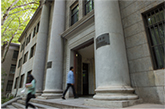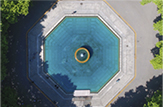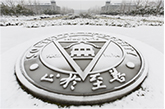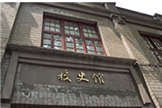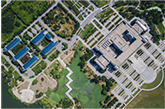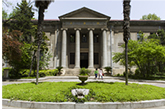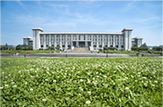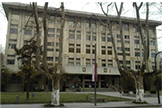Wang Jianguo, male, born in July 1957 at Changzhou City, Jiangsu Province, Professor, PhD student supervisor, National First-Class Registered Architect, a member of World Society for Ekistics (WSE), studied at the School of Architecture of Nanjing Institute of Technology specializing in Architecture in 1978 and was awarded PhD Degree by Southeast University in 1989. Afterwards he once taught at the Architectural Research Institute, the Department of Architecture and the School of Architecture as Deputy Director and Deputy Dean in succession after 1989, then was serving as Director of Department of Architecture from 2001 to 20013 and Dean from 2003 to 2014. In 2001, he was enrolled as “CheungKongScholarsProgram Distinguished Professor” and accessed to the National Science Fund for Distinguished Young Scholars; in 2015, he was elected as the Academician of Chinese Academy of Engineering.
At present, he is working as Director of the Academic Committee of School of Architecture, Southeast University, Director of the Urban Design Research Centre of Southeast University, Director of theSpecialty Guidance Committee of Architectural Discipline in National Institutions of Higher Learning, Deputy Director of the Architecture Professional Education Evaluation Committee in National Institutions of Higher Learning, Vice Chairman of the Architectural Society of China, Vice Chairman of China Association of City Planning and Deputy Director of Urban Design Academic Committee concurrently, Deputy Director of the Architectural Art Committee of China Artists Association, member of the Urban-Rural Planning Expert Committee of the Ministry of Construction,and Chief Editor of Frontiers of Architectural Research.
Academician Wang Jianguo has been long engaged in scientific research, teaching and engineering practice in respect of urban design and architecture. Series of innovative achievements have been made. Besides, He took the initiative in China to establish the modern urban design theory and method system in a relatively systematic and complete manner, proposed the quantitative guidance, management and control methods in resect of rational layout of urban high-rise buildings, originally constructed the technical methods of making scientific judgment on urban land development intensity and the plot ratio, and firstly put forward and practised the urban landscape design methods on the basis of dynamic random viewpoint. All of these have technically indicated the construction mechanism of urban spatial form and initially solved the difficulty in urban design about height, density, landscape optimization, management and control, etc. in urban construction. He has published 7 works and over 180 papers in succession. His works have been cited by over 8000 papers. Besides, he has delivered lectures and carried out exchanges in several world renowned institutions of higher learning, including Massachusetts Institute of Technology, University College London and Technische Universiteit Delft, etc., and addressed keynote speeches at 16 international academic conferences in succession including World Urban Forum, etc.. His achievements have been highly acclaimed by international peers.
He has won one first place of National Prize for Progress in Science and Technology granted by the Ministry of Education, one first prize of National Prize for Natural Sciences granted by the Ministry of Education, two second prizes of National Prize Progress in Science and Technology granted by the Ministry of Education, the second prize of National Teaching Achievement Prize in terms of his teaching achievement, the National-Level Teaching Team, the National Quality Course, National Model Teacher and the special prize of Bao Steel Excellent Teacher Award, etc. As the guiding teacher, he was also awarded the National Top 100 Outstanding PhD Dissertation Prize in 2013. In 2016, he was titled as the renowned teacher concerned in the “Ten Thousand Talent Program”as granted by the Ministry of Education.
The team of Academician Wang Jianguo has carried out engineering practices from four perspectives including large-scale urban design, urban architecture creation, green urban design and urban architectural heritage protection, etc. in succession in the past three decades. As the project principal, he has accomplished over 60 projects of urban design and architectural design in over 30 cities including Beijing, Shanghai, Guangzhou, Nanjing and Hangzhou. He was awarded one first prize and one third prize of national outstanding architectural design, one first prize, two second prizes, one third prize and one commendation prize of national outstanding planning design, seven first prizes and two international prizes of planning and design at the provincial and ministerial level.


